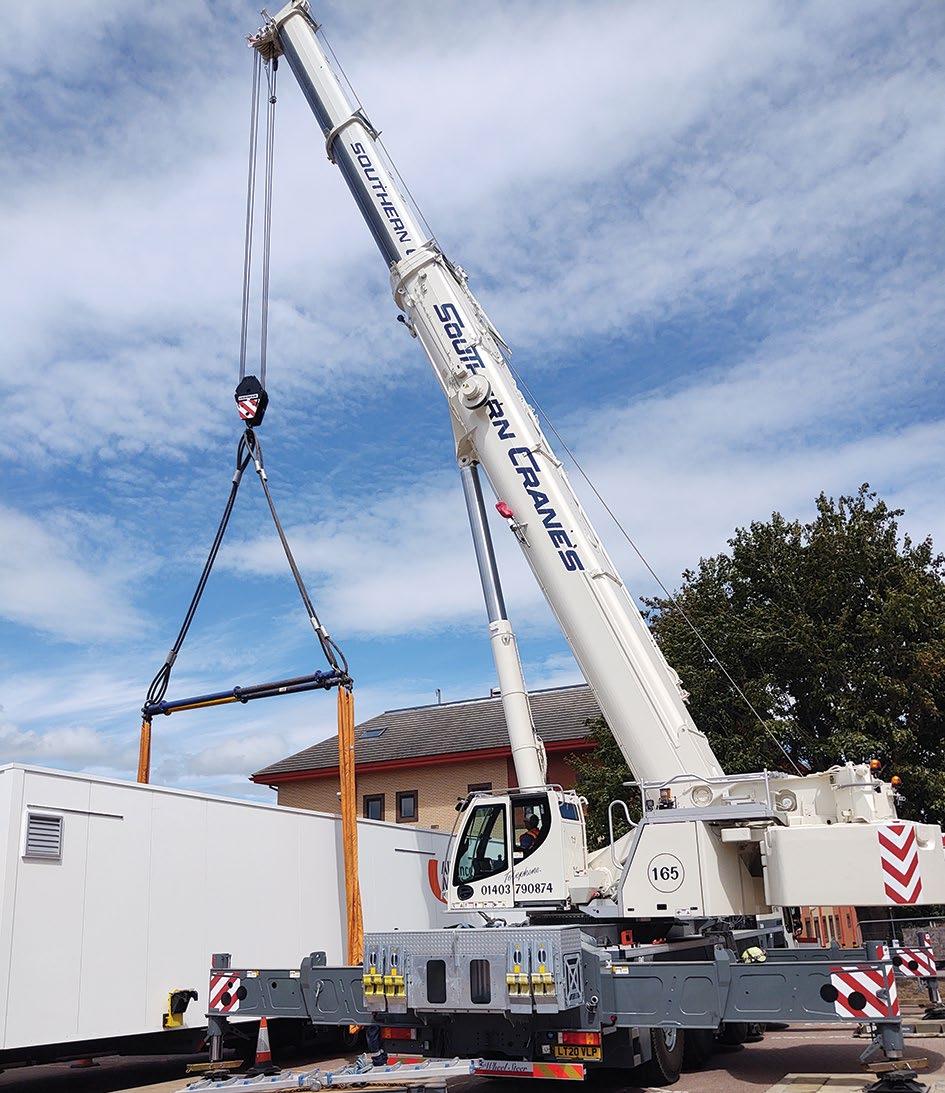remote controls gear is better because the forward motion is reduced as the number of gears falls. Another particularly important point was how to actuate the brake and when the engine speed had to be increased. Every test we carried out enabled us to learn a little more and the result was the first mobile crane in the world that can be manoeuvred by remote control from outside the cab.”
Successful application After taking delivery of the new LTC 1050-3.1 last Autumn, Salgert was naturally quick to test the new technology out on a job which involved replacing industrial machinery at an aluminium diecasting plant in Bad Münstereifel.
c&a “It was the perfect job for our new LTC 1050-3.1 with its RemoteDrive,” says Salgert operator Tony Gölitzer, who became the first crane operator to use the production version of the system on a real job. “The difficulty was that the machines had to be moved in a low building with truly little space and which already contained other machines, while production could not be stopped. RemoteDrive enabled me to stand right next to the area with the greatest ‘pinch points’ allowing me to manoeuvre the crane safely through the space. The door was narrow and low, and we had installed the short erection jib. That meant I had to watch it pretty closely.”
When millimetres count
As well as using the RemoteDrive system, Liebherr’s VarioBase system was also employed to set the crane’s outriggers at irregular positions between the facilities existing machinery and achieve the best capacities for the space available. After returning to the cab, the crane was also used to pick & carry machinery and components weighing
up to 18 tonnes from the building.
Future use Since its introduction last year Liebherr claims that more than 50 percent of all new LTC 1050-3.1s are being ordered with the RemoteDrive option. It has also begun talking to customers in order to gauge what demand there might be to introduce it on other models in its range.
Remote logging Working in the timber handling and transportation industry is often physically demanding, hazardous and in many countries requires operators to work all day in harsh weather conditions. It is also a highly competitive market with increasingly stringent legislation leading to shrinking margins. Unsurprisingly, finding skilled drivers/operators that want to work in the sector can be a real challenge. Hiab’s HiVision system allows operators to control its Loglift cranes from inside the truck cab
A few years ago loader crane manufacturer Hiab set out to help improve the driver’s lot with its HiVision remote control system. By combining four cameras with a virtual reality headset, HiVision allows operators to load/ unload timber from the comfort and safety of the truck cab. The headsets provide a field of vision of up to 270 degrees - 30 degrees more than Hiab claims is usually required from a rear mounted crane cab – and features two joysticks mounted on the seat armrests within the cab. The company also claims the system reduces the physical demands and exposure to bad weather than traditional forestry cranes, making the industry more accessible.
46 cranes & access November 2020
Lars Norlings Åkeri has provided its services throughout Sweden for more than 80 years
World’s coolest Grandma? This certainly proved the case when new grandmother Åsa Norling of family run timber transport company Lars Norlings Åkeri came out of retirement in order carry on the family business while her son and
daughter in law cared for their new baby girl. But it only became a practical reality thanks to the HiVision remote control system. Established in 1937 by brothers Otto and Holger Norling, the company has provided timber and














